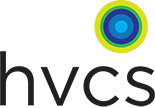Regional Care Coordinator – Linking Overdose Survivors to Aftercare Services
HVCS joined a new statewide effort to link people who have survived an opioid overdose with local recovery, treatment and support resources. Coordinated by NY MATTERS, our Regional Care Coordinator is based in Dutchess County but is empowered to serve clients throughout the Hudson Valley region.
The Regional Care Coordinator works with treatment centers, medical providers, emergency rooms, syringe access programs, medically-assisted treatment providers, and other services to compile a comprehensive list of available referrals. Contact information and data are loaded onto an iPad search portal that is available in emergency rooms. After a non-fatal overdose, medical staff will provide the iPad to clients so they can line up support services immediately, before leaving the emergency room. The program’s purpose is to increase the number of successful referrals to aftercare resources, without lengthy delays or lag times. Studies have shown that overdose clients are much more likely to pursue treatment the sooner they connect with the provider and the “warm handoff” happens in a timely manner. If a client experiences any obstacles, such as a wait list or lack of response from a provider, they are less likely to follow through on the treatment referral. By delaying treatment, the client is much more likely to continue using substances illegally and, possibly, risks another overdose.
HVCS’ Regional Care Coordinator is part of a growing interconnected web of substance use disorder providers. Their role is to pave the way for immediate referral uptake among providers, to funnel more people to the treatment they need to free themselves or reduce the harm of substance use. Our RCC is also an integral part of our Drug User Health Hub in Dutchess County. The Health Hub links clients to buprenorphine (Suboxone) prescribing providers, either in person or via telemedicine. Buprenorphine prevents the feelings of opioid withdrawal without the “high” or harm. It is often a critical component of a client’s recovery from opioid use disorder.

